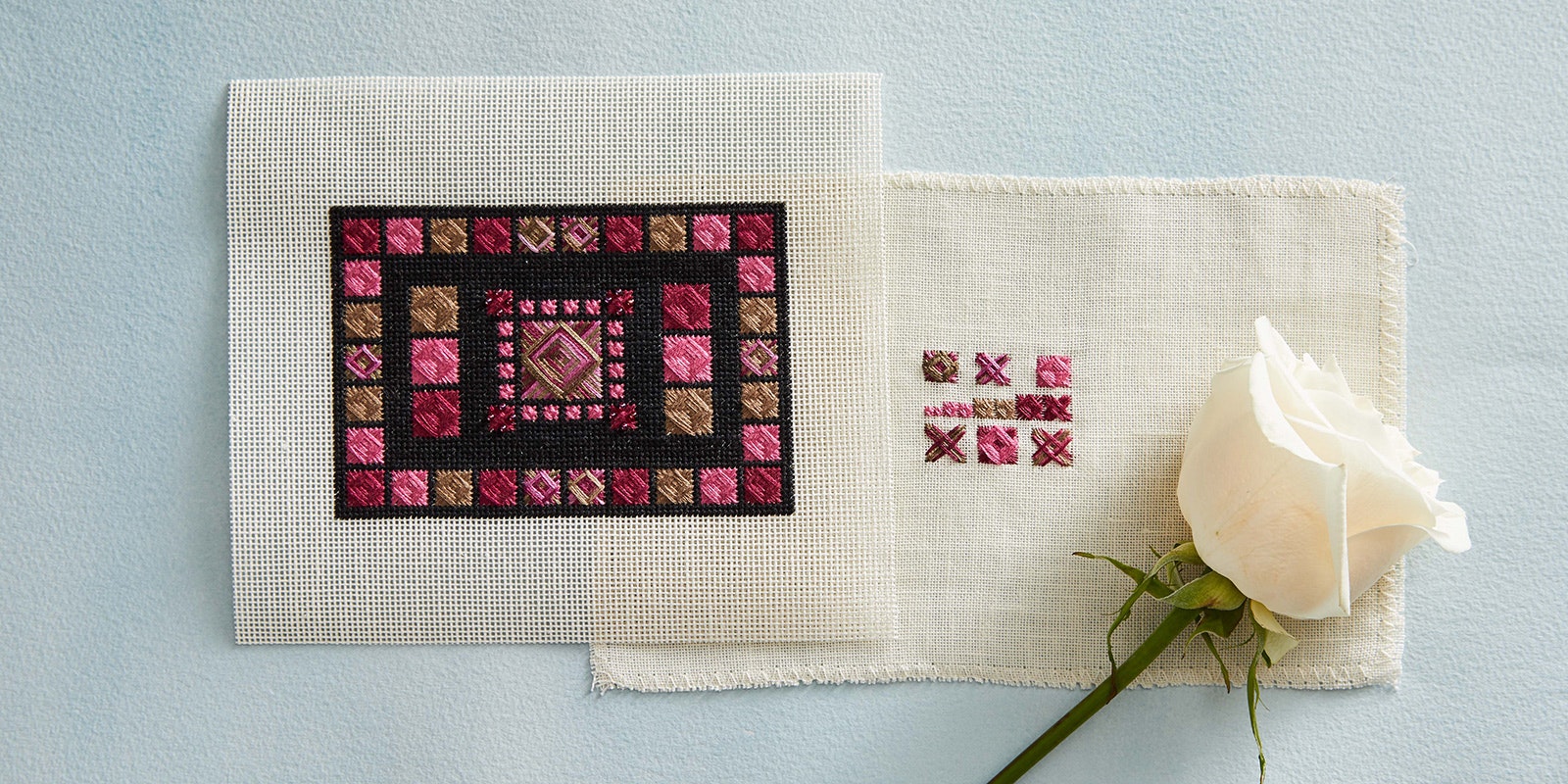The Norwich, waffle, southern cross, or plaited interlaced stitch is considered to be a large, square, highly textured, modern-day canvas and needlepoint stitch. It is composed of a raised diamond superimposed upon a stitched square. Normally, it's worked over an uneven number of background threads.
I found this stitch to be called the Norwich or waffle stitch in equal frequency in the literature. This is somewhat unusual because one name usually predominates. Personally, I prefer the Norwich name because of less confusion; there is another embroidery stitch called a waffle stitch that consists of rows of small straight stitches. There are also waffle stitches in both knitting and crochet. How the “Norwich” appellation originated remains a mystery.
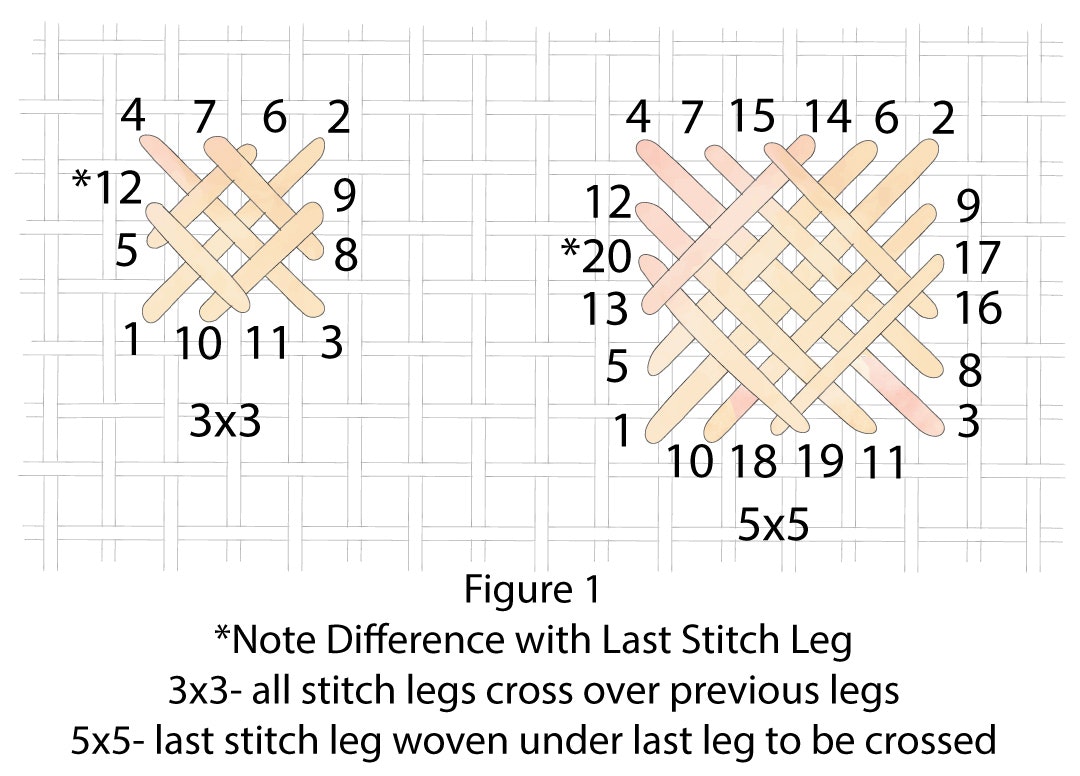
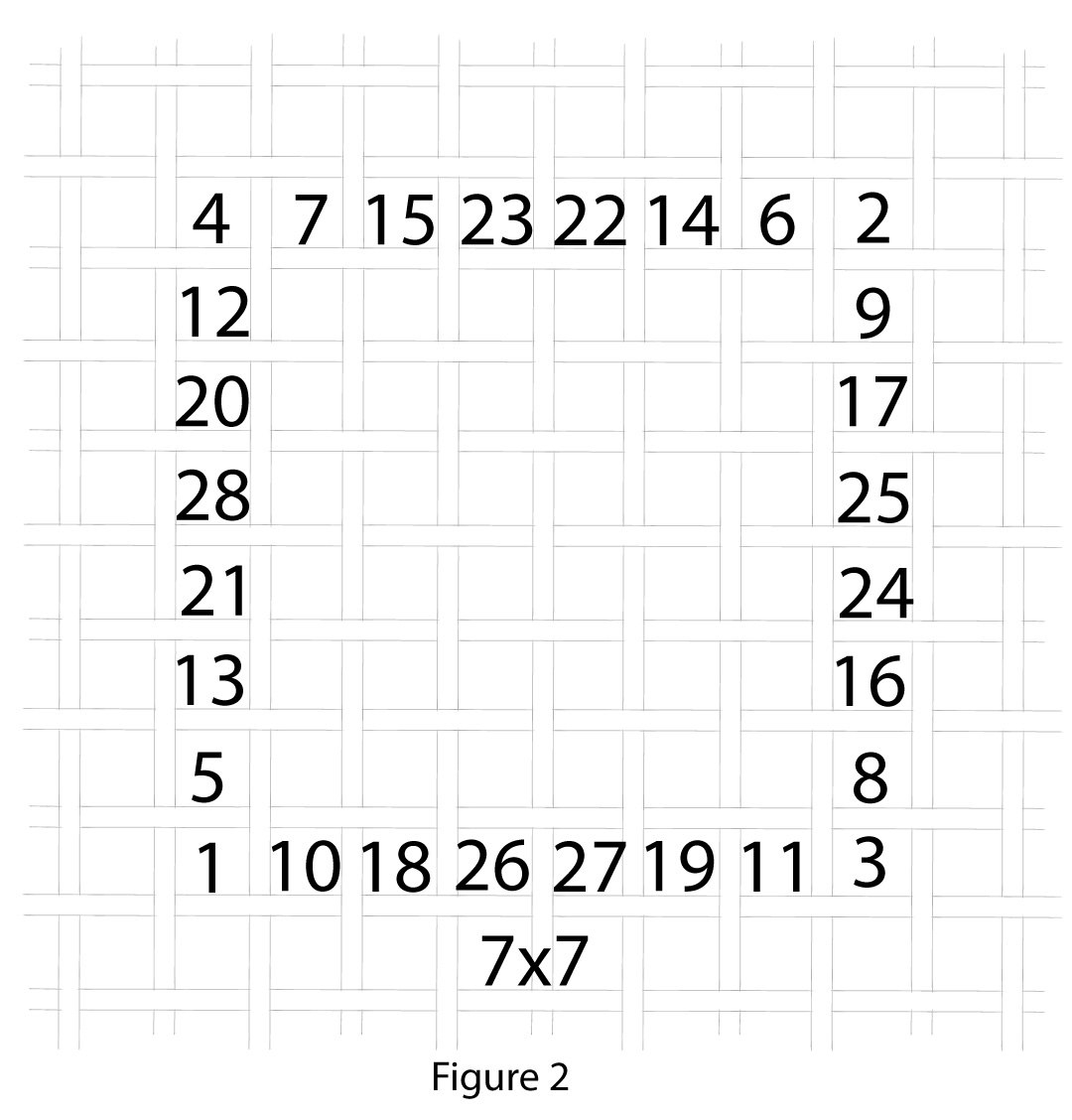
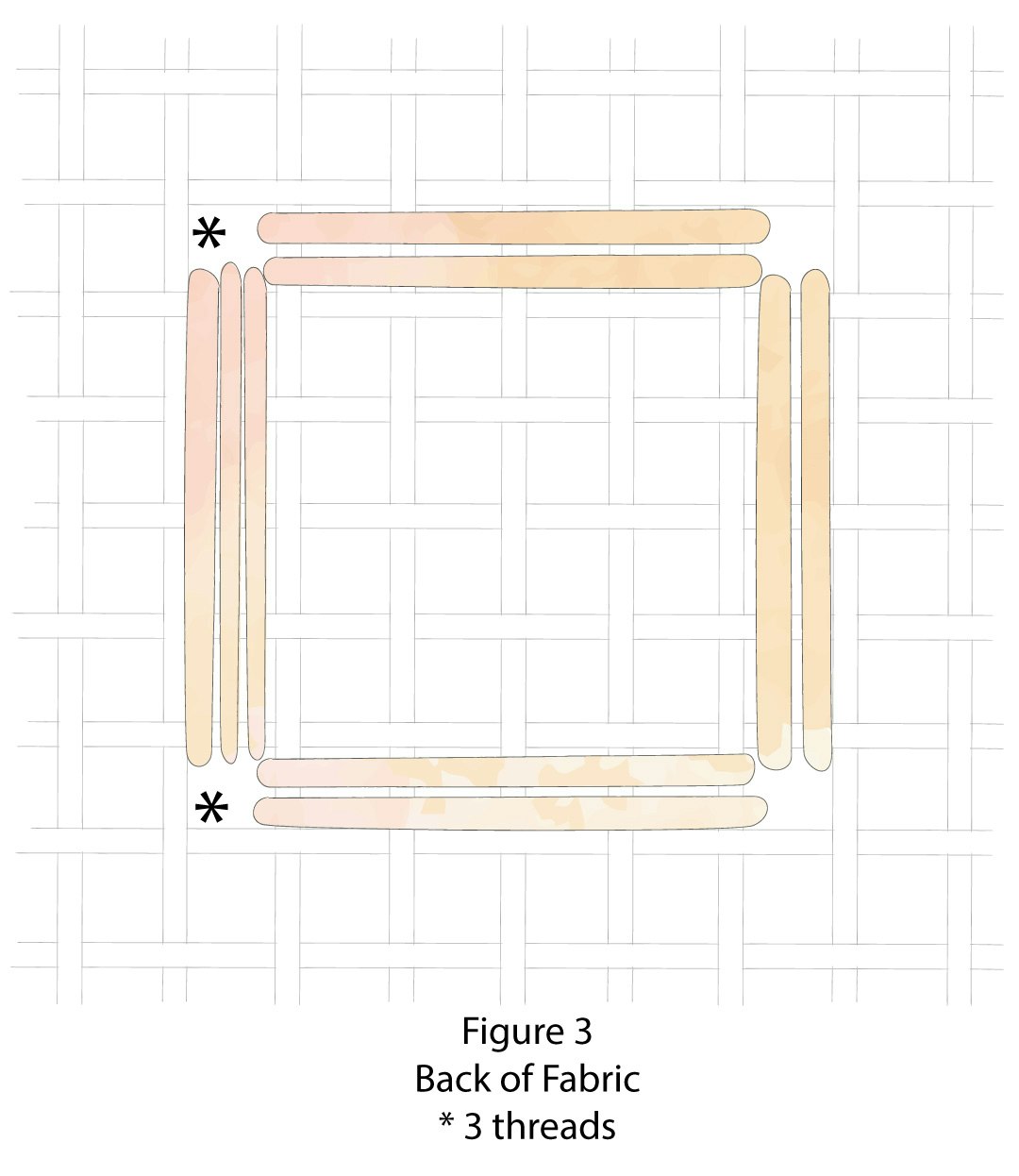
The Norwich stitch always begins with a large crossed stitch with numerous legs stitched over the original crossed stitch (Figure 1) and is commonly worked over 7 (Figure 2) or 9 threads, but thread counts of 3 (Figure 1), 5, 11, 13, 15, and even more have been used. Stitching over 3 x 3 threads limits the size and definition of the raised inner diamond shape. Of course, the larger the number of threads this stitch encompasses, the more complex and time-consuming the stitch becomes. It can be worked over an even number of threads but with a slight modification: the center hole along each side is left empty. There are a couple of simple and logical variations for this stitch: a partial or incomplete stitch (Figures 4 and 5), and the final leg of the Norwich stitch can be woven under the last leg that it crosses, which continues the established stitching pattern (Figure 1, 5 x 5) or not (Figure 1, 3 x 3). Weaving under the last diagonal stitch is especially important for partial stitches, but for complete stitches, the end of the last leg ends at the edge of the stitch, so it is not as noticeable. On the back of the fabric, this stitch forms an open box of multiple strands (Figure 3).
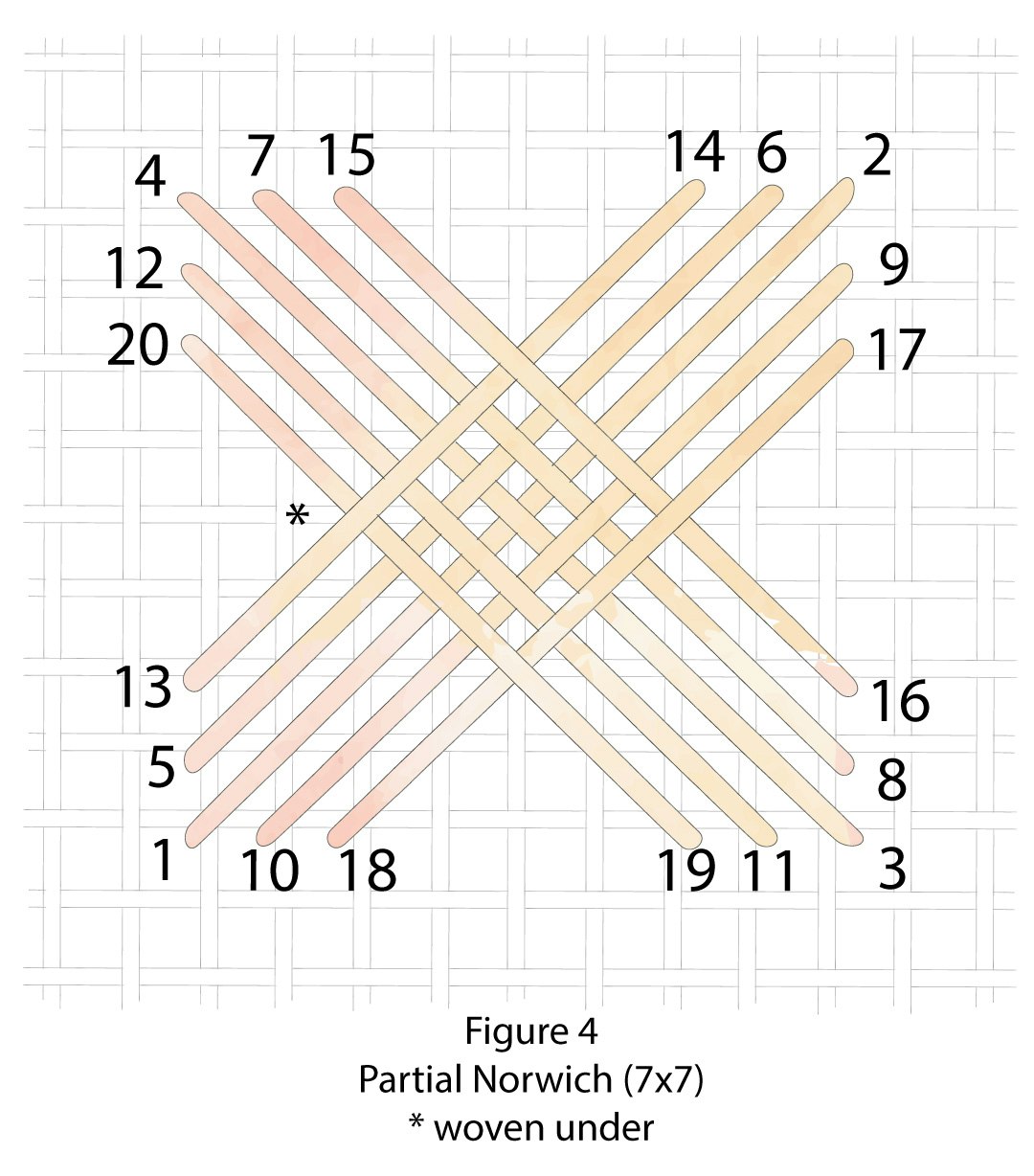
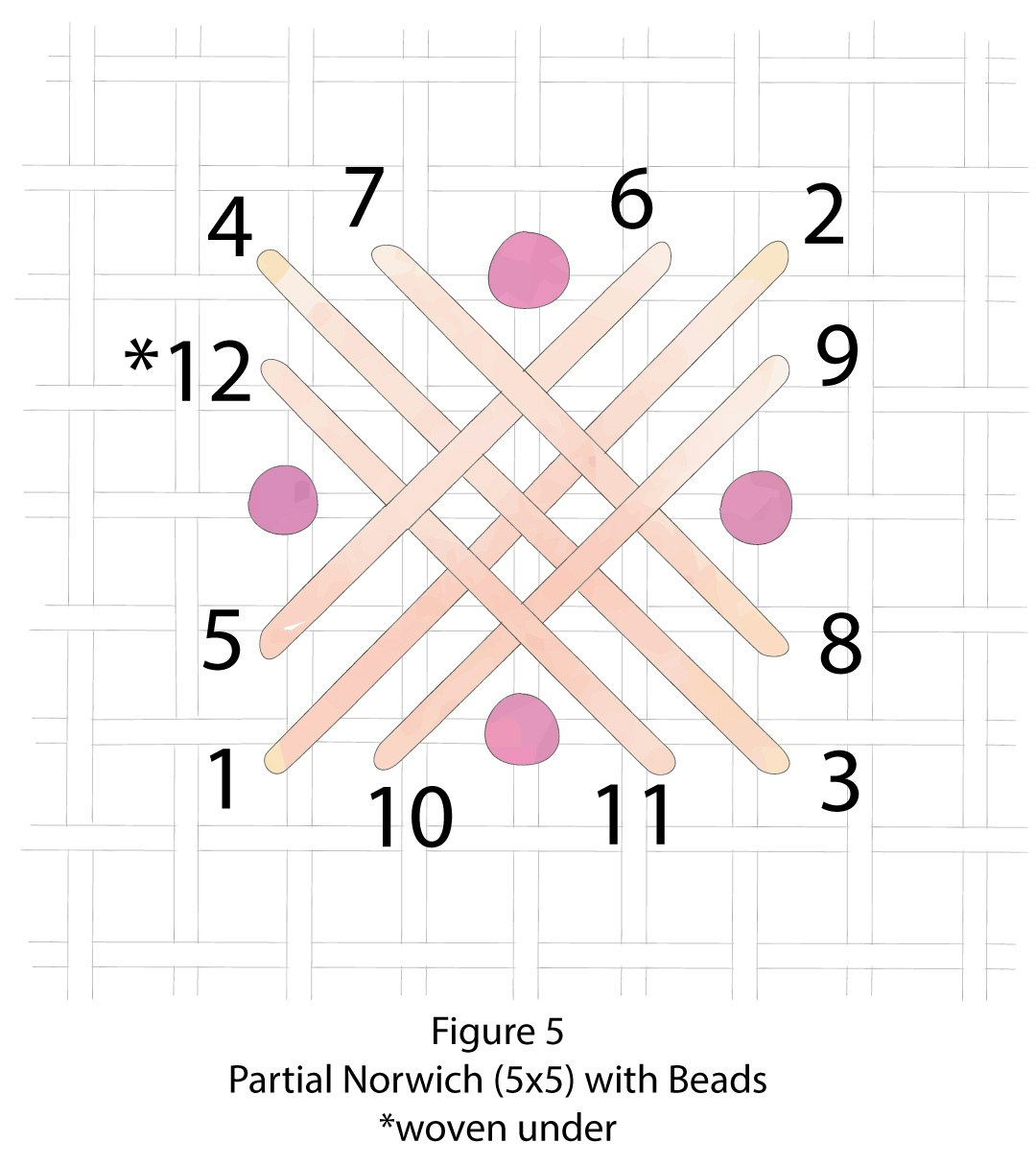
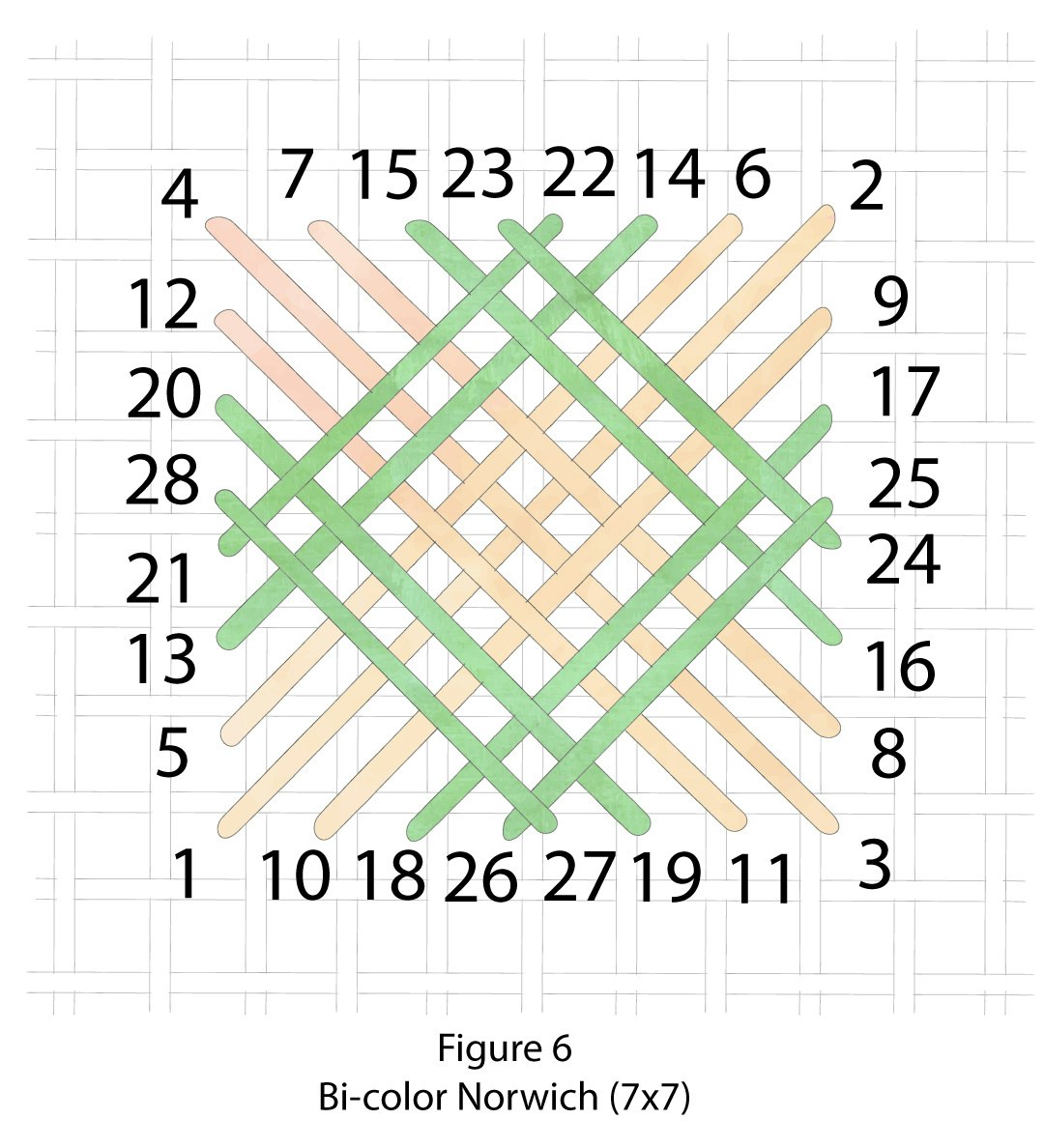
Because of the numerous legs and the compound nature of this stitch, it is usually illustrated with numbers only around the periphery of the stitch (Figure 3). Bring the needle to the front of the fabric at the odd numbers and return to the fabric back at the even numbers. Following this many numbers can not only be tedious, but can easily lead to a mistake. See Figure 8 for a simplified “road map” one can follow after completing the initial crossed stitch, which establishes the outer dimensions of the stitch. Bring the needle up in the hole above where the crossed stitch started (leg 1), stitch a long diagonal stitch (legs 5 and 6) parallel to the first leg of the crossed stitch (legs 1 and 2), travel horizontally to the left and bring needle up in hole next to 4 and then diagonally down into hole above 3; bring needle vertically up into hole directly below 2; travel diagonally down to hole to the right of 1; horizontally to the right to hole left of 3; and diagonally up to hole directly below 4. Round One is complete. Continue in this manner around the square. Remember: vertical down, diagonal up, horizontal and diagonal down, vertical up, diagonal down, horizontal and diagonal up. Continue in this manner until square is completely or partially filled, as desired.
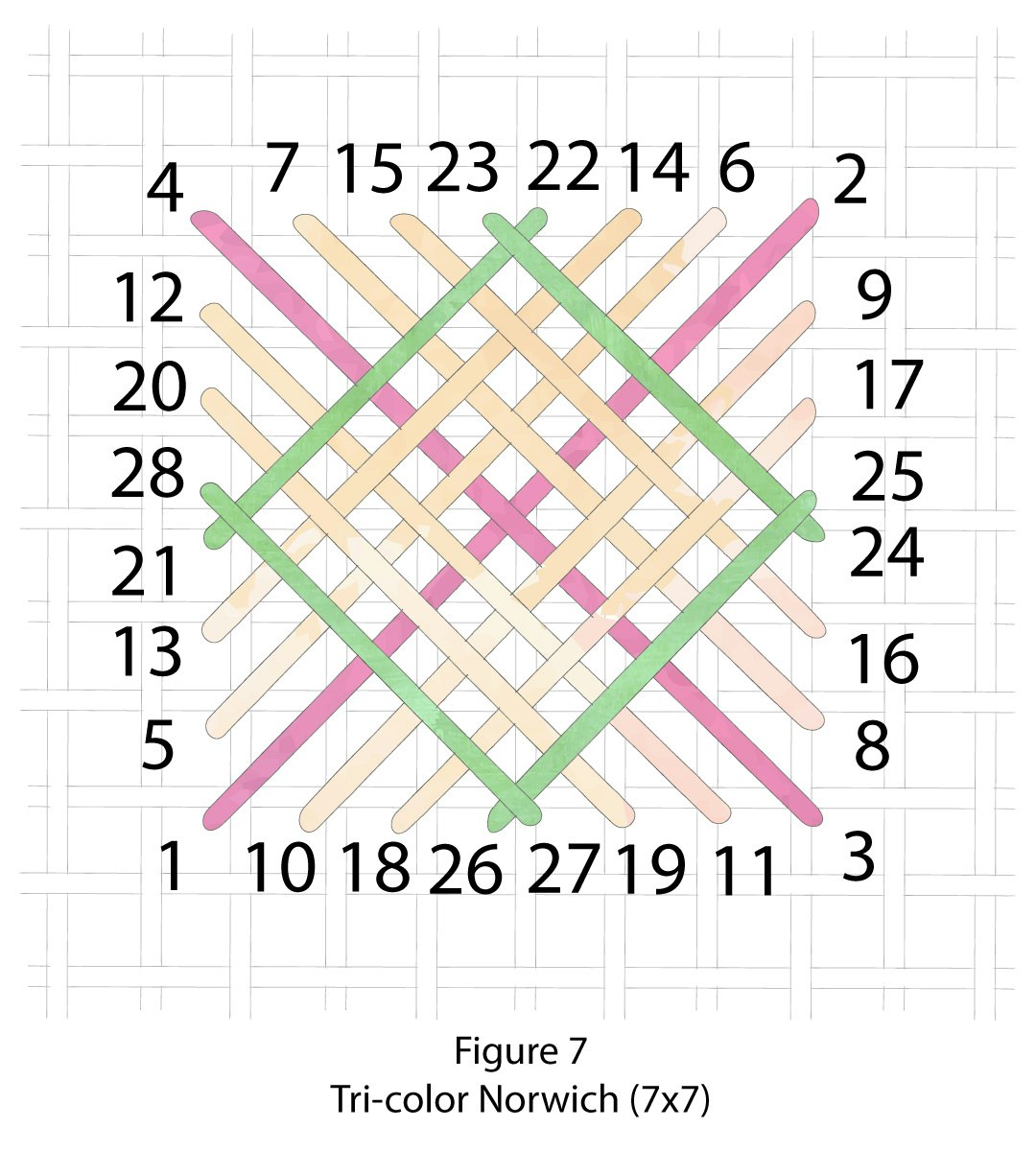
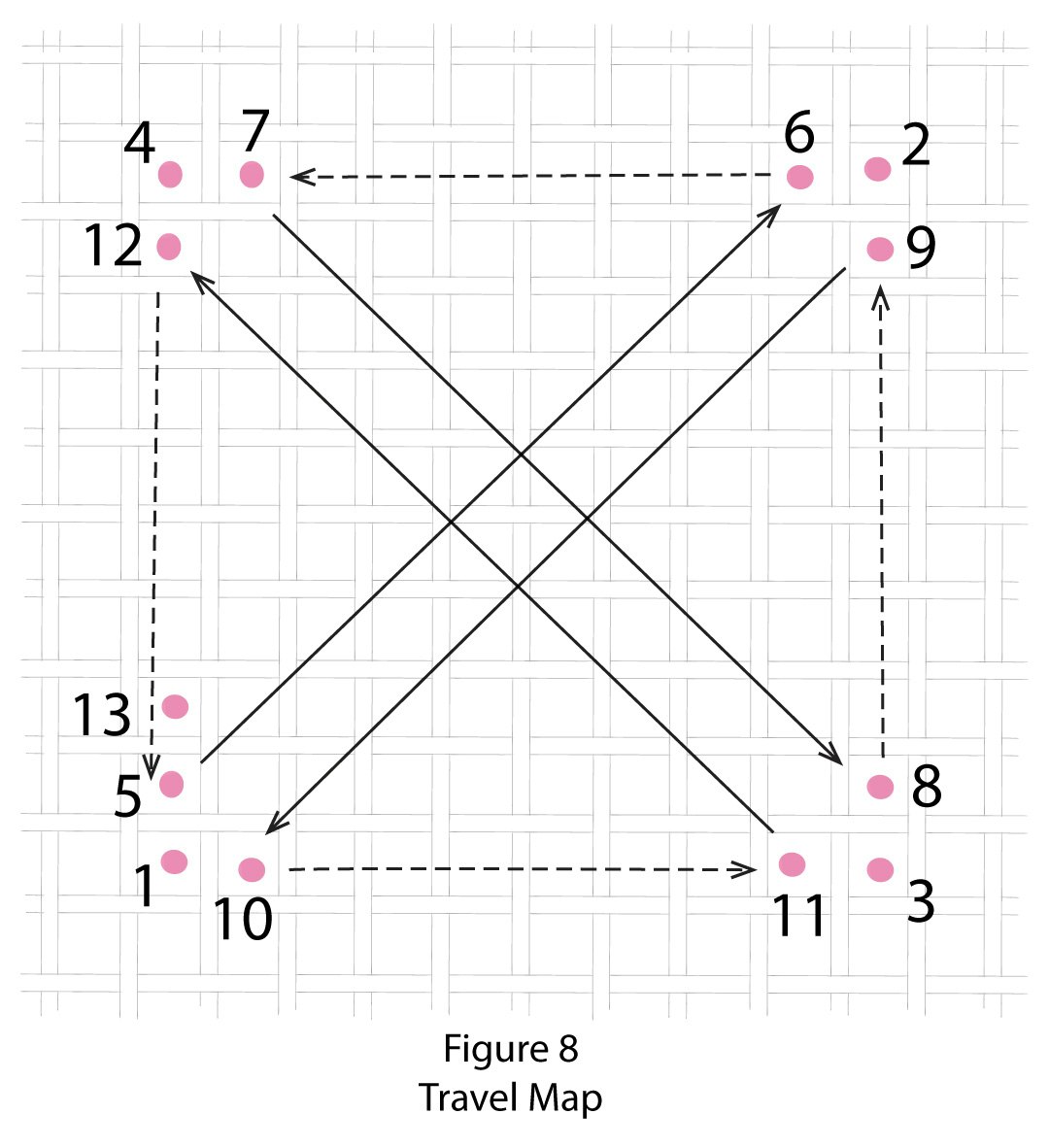
This popular stitch can be worked on most types of evenweave fabric, mono canvas, and linen. Linen fabrics need to be of a heavier quality or heavily starched to be able to handle the density of this stitch. The Norwich stitch is worked using a tapestry needle and always with the ground fabric under tension from a roller frame, stretcher bars, or hoop. To prevent warping the ground fabric, do not pull the individual legs of the stitch; this is especially true for fabrics other than needlework canvas.
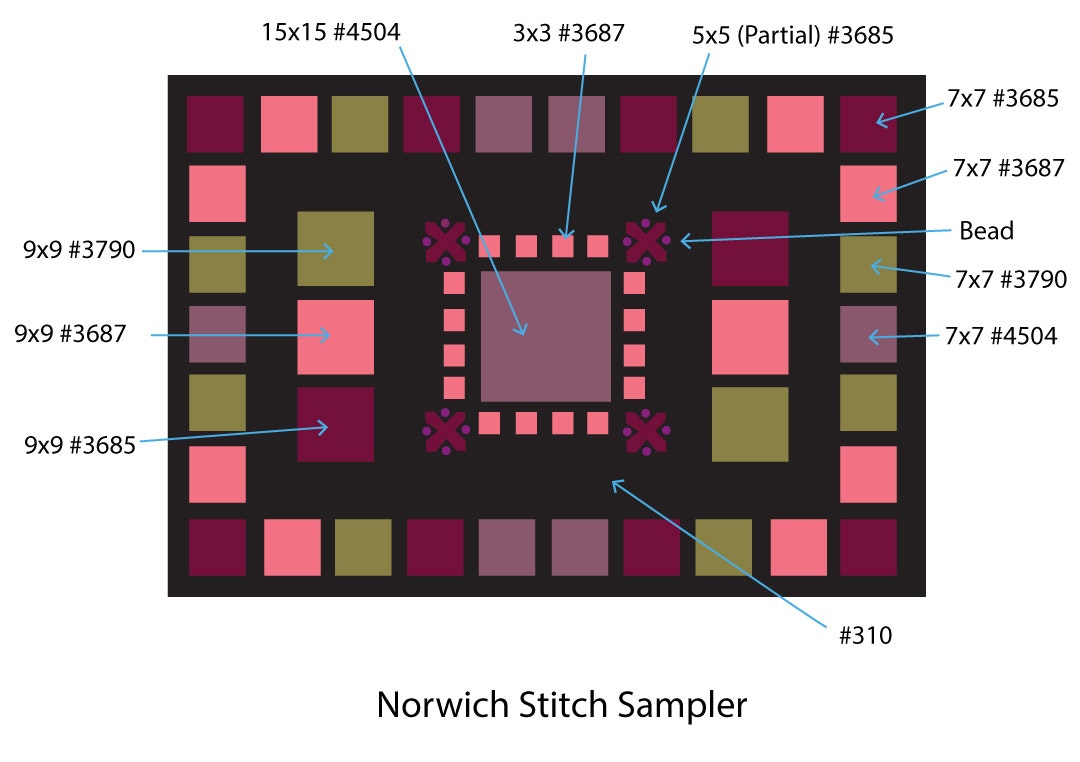
This Norwich Stitch Sampler used 3 strands of floss for each of the Norwich stitches (3 x 3, 5 x 5 partial, 7 x 7, 9 x 9, and 15 x 15) and 4 strands of #310 for the continental stitch, which was used for the background. Beads were attached with 1 strand of #310.
Almost any type of thread (cotton or silk floss), yarn (tapestry or Persian), and even narrow ribbon can be used as long as the weight of the fiber is compatible with the gauge of the canvas or the thread count of the fabric. Smooth threads or yarns work best. Fuzzy yarns or threads will obscure the appearance of the stitch, and stiff threads (some metallics) will not lay smoothly on the ground fabric. One, two, three, or more thread colors can be used per stitch (Figures 6 and 7). Variegated and overdyed threads are especially fun to use and create a visual wow factor. The completed stitch is a wonderful surprise! When using multiple fiber strands (such as floss), keep the individual strands as parallel as possible by railroading for the best coverage, appearance, and shine.
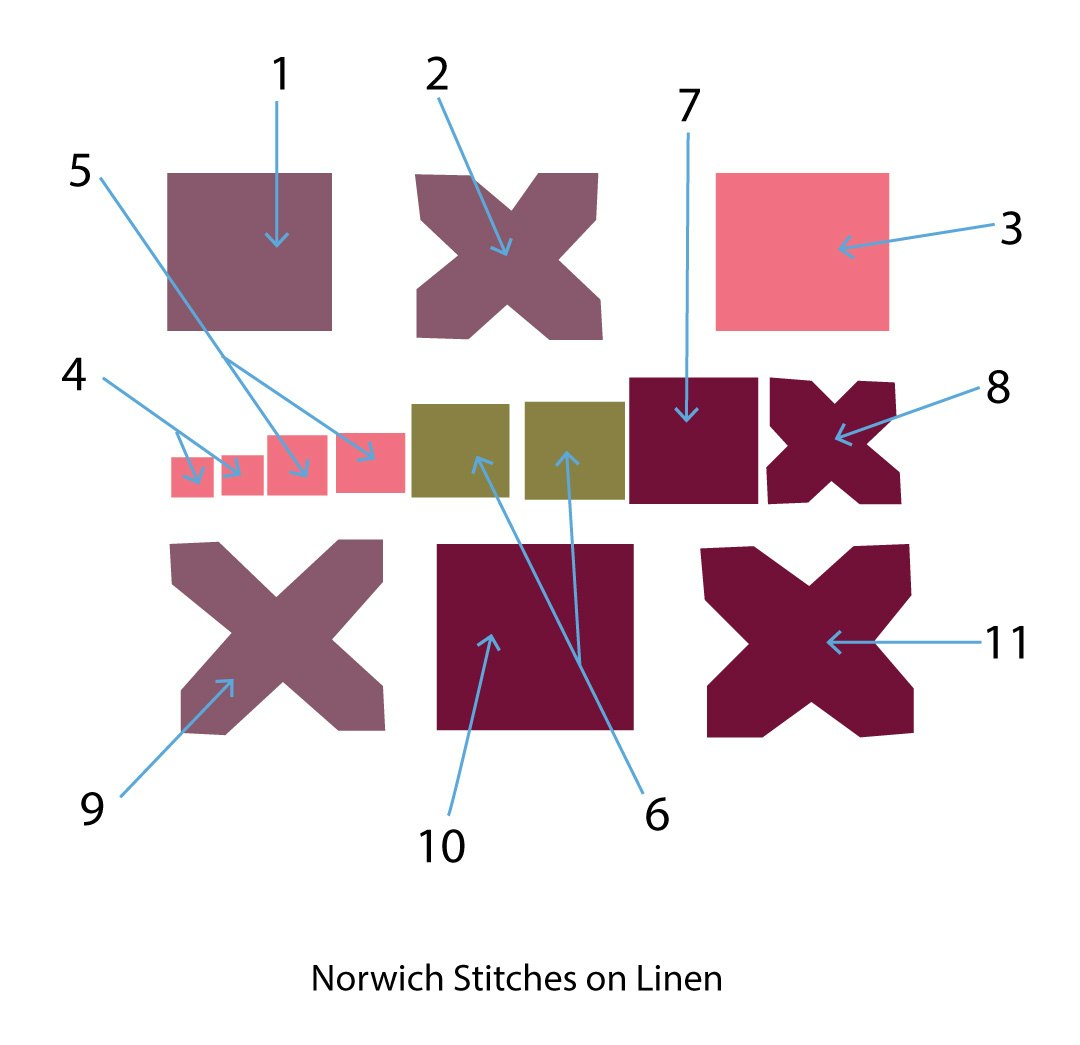
The Norwich Stitch on Linen Sampler Key: 1) #4504, 2 strands, 11 x 11; 2) partial, #4504, 2 strands, 11 x 11; 3) #3687, 2 strands, 11 x 11; 4) #3687, 1 strand, 3 x 3; 5) #3687, 1 strand, 5 x 5; 6) #3790, 1 strand, 7 x 7; 7) #3685, 1 strand, 9 x 9; 8) partial, #3685, 2 strands, 9 x 9; 9) partial, #4504, 2 strands, 13 x 13; 10) base #3685, top #3687, 2 strands, 13 x 13; and 11) partial, base #3790, middle #3687, top #3685, 13 x 13.
The Norwich stitch can be used as a single isolated motif (partial or full) or grouped together for complex-looking bands, borders, and backgrounds. Two or three rows of alternating black and white Norwich stitches make a great checkerboard band or border.
—Deanna Hall West
Deanna Hall West is PieceWork’s needlework technical editor; she was previously the editor of The Needleworker magazine.

